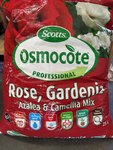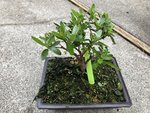fredman
Masterpiece
Very thought provoking post above @Deep Sea Diver
For the first time this exact thoughts has been on my mind all winter....since I read the books on microbes and fungi. I need to replant all azaleas this spring and they are all in organic soil. They haven't been doing that well in there to be fair. My ratios of compost, worm castings and bark was way off...soil compacts and gets hydrophobic.
Previously I had problems keeping azaleas alive in pots...used pumice/bark. I lost quite a few and took most out and planted them in the ground.
Now those in pots and some in the ground has to be replanted again.
I'm worried this time round to wash and trim to much off of the roots. My thoughts are with them microbes and fungi . I actually won't be washing off soil this time. I'm just going to remove as much I can and blow the rest out with compressed air...saw that on a Peter Warren video.
. I actually won't be washing off soil this time. I'm just going to remove as much I can and blow the rest out with compressed air...saw that on a Peter Warren video.
I went and bought a bag of ericacious soil today... it's preloaded with a slow release fertilizer...don't like that, but it's all there is available. Hopefully it's very lightly loaded.
I'll plant some in that and the rest in kanuma. Will see what results I get.

For the first time this exact thoughts has been on my mind all winter....since I read the books on microbes and fungi. I need to replant all azaleas this spring and they are all in organic soil. They haven't been doing that well in there to be fair. My ratios of compost, worm castings and bark was way off...soil compacts and gets hydrophobic.
Previously I had problems keeping azaleas alive in pots...used pumice/bark. I lost quite a few and took most out and planted them in the ground.
Now those in pots and some in the ground has to be replanted again.
I'm worried this time round to wash and trim to much off of the roots. My thoughts are with them microbes and fungi
I went and bought a bag of ericacious soil today... it's preloaded with a slow release fertilizer...don't like that, but it's all there is available. Hopefully it's very lightly loaded.
I'll plant some in that and the rest in kanuma. Will see what results I get.







